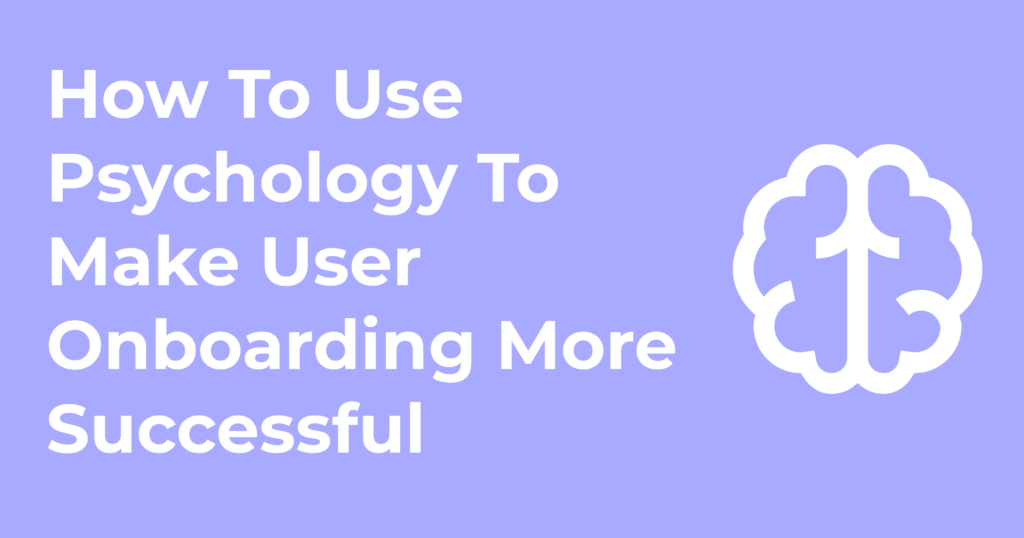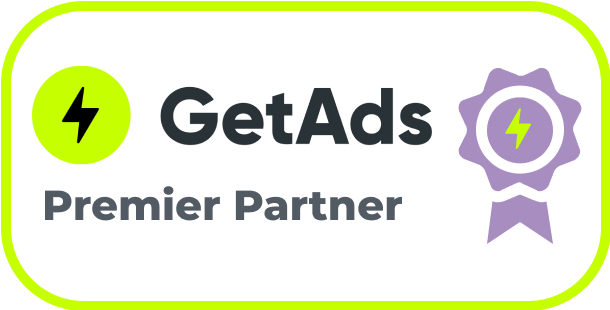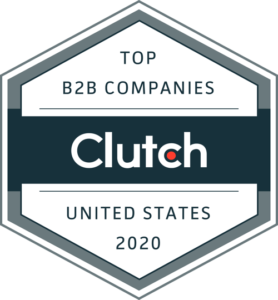NOOOO.
Yeah, This was the exact thought that came into my mind when I came to know that even a goldfish can outrun us when it comes to the attention span.
Lemme remind you that you are competing with people whose attention span has been chilled out to 8 seconds.
If you want your visitors to successfully complete onboarding… You need to use psychology for user onboarding.
You have to get in their mind and quick.
How?
Use Psychology to stand out and give them an onboarding experience they will remember.
Do you know why Psychology works?
If put in simple terms, it’s because we are creatures of habit.
No matter how random you think you behave, there always lies a logical explanation behind your every tantrum, decisions, or steps.
Enough chit-chat…
Let’s dive right into it.
Below I am showing you how you can use psychology to make your onboarding more successful.
1. CHOICE PARADOX
Have you ever felt overwhelmed by the number of choices you have to choose?
When people are prompted with more choices, they tend to overthink, resulting in analysis paralysis.
The end result;
They are not completely satisfied with what they choose and do not completely go through their onboarding process.
Sooner or later, a feeling starts to linger in one corner of their mind, what if they had chosen other options.
You don’t want that with your audience and that too, in your Onboarding.
You see, onboarding is the first line of interaction with your customer.
And I don’t think I have to tell you how important the first impression is.
See how Unbounce increased its conversion rate by 16.93% just by reducing the options from four to three.
2. ZEIGARNIK EFFECT
You notice that uncomfortable feeling when your favorite show ends in a cliffhanger. Don’t you?
This is a classic example of the Zeigarnik effect.
We are really uncomfortable when things are left unfinished.
That’s why we tend to focus on completing it.
It was first discovered by Bluma Zeigarnik.
One of the well-known English novelists Charles Dickens also used the same technique.
His works, later published as complete novels, were originally serialized.
He would use cliffhanger to arise anticipation and mystery to people’s mind.
It was so successful that people in America would wait at the New York docks to buy the latest series that would arrive by ship from Britain.
That’s how desperate they were. See, How Storychief uses the Zeigarnik effect in their Onboarding.
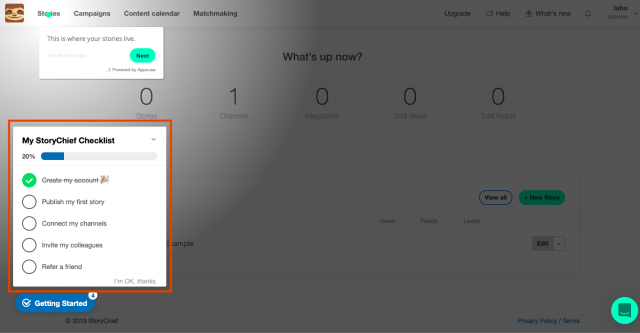
Also, check this Ghost Onboarding. I recommend you reading this post.
They increased their conversation by 1000% (yeah, no kidding).
Quoting from their site:
“Users who added a custom theme to their blog converted at just over 10% — more than 10x the rate of users who simply stayed with the default theme.”
You see, the task was just a simple theme change, not posting some blog post.
And that made a 10X difference.
3. GAMIFICATION
Kids, candies, and Dopamine.
You know how much our brain is addicted to the Happy drug, aka Dopamine.
(Yeah, Our brain loves being high).
Well, Gamification is just a method to achieve that.
Dopamine, when released, triggers a pleasure-based reward system.
The more goals you achieve, the more dopamine your brain releases, and the easier it’s to stay motivated.
Psychologist Jamie Madigan explained how gamification works using examples of loot based games.
Taking an excerpt from his blog post,
“Let’s consider slot machines and a type of brain cell called “dopamine neurons.”The latter are the bits of your gray matter responsible for monitoring levels of the pleasure-inducing chemical dopamine in order to regulate behavior and figure out how to get more of a good thing. It’s these cells that light up when something nice happens in your life (say a delicious Hot Pocket or a fuzzy puppy belly) and triggers a gush of the neurotransmitter dopamine. But what’s more, dopamine neurons play the role of trying to predict the rush from nice things, and they may fire before you actually encounter them. Given a couple of chances, they’ll learn to light up when you hear the microwave timer beep that precedes your delicious Hot Pocket. This is a pretty useful thing as far as evolutionary advantages go since it clues you in ahead of time that something good is in the vicinity.
But this is only part of what makes loot-based games work so well. The real key is that while dopamine neurons fire once your brain has figured out how to predict an event, they really go nuts when an unexpected, unpredicted gush of dopamine shows up, giving you an even bigger rush. It’s like DUDE! UNEXPECTED HOT POCKET! Again, I’m guessing that this is an evolutionary advantage that causes us to obsess over unexpected pleasures and try to predict them so that we can get more of them.”
Simply put, Gamification tries to leverage this addiction of our brain by offering rewards for the completion of small goals.
Duolingo is an expert in using gamification in their User Onboarding.
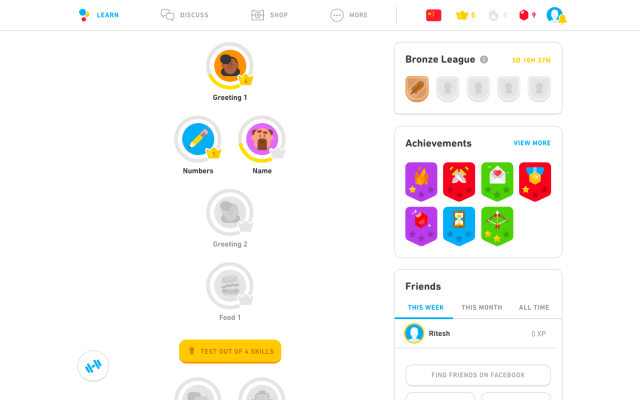
So, how can you use Gamification in your SaaS Onboarding?
Simply reward your user for taking certain steps.
Make it fun and playful.
Give them some coupons, swipe files or even some sort of badge for the task they complete.
Check how Neil Patel uses Gamification to generate leads.

4. ENDOWED PROGRESS EFFECT
Man, you couldn’t count the number of coffee I had in Starbucks.
Even after having 2–3 coffee shop under my vicinity, I choose to go to Starbucks.
I am hooked on them.
They make a “mouth lickin’ good” latte,
But that’s not the only reason I like to go to Starbucks.
You want to know the other reason. Don’t you?
It’s their reward program.
For every purchase I make, I get a star.
And after collecting 12 stars, I get a free cup of coffee.
It always feels good to see the stars pile up and to know how close I am to getting a free coffee.
In a nutshell, When people feel they have progressed towards a goal, they will be more motivated and committed to complete those goals of theirs.
But there is a certain condition to be met for it to be successful.
You have to first induce people with a sense of achievement, whether it is completed by them or artificially induced by us.
There is a whole experiment done to prove this point.
Joseph C. Nunes and Xavier Dreeze conducted an experiment with a Loyalty card for a car wash.
They divided people into two groups.
To the 1st group, they distributed cards where the customer would require 8 purchases to get a free wash.
And to the 2nd group, they distributed cards requiring 10 purchases but with 2 of the spaces in the card already stamped.
Technically each group had to make the same amount of purchase.
It was just that a sense of achievement or progress was artificially induced to the second group.
The Result: After 9 months, the 2nd group redemption rate was 34%, way higher than the 19% of the 1st group.
Also, the people in the 2nd group will come more often for the car wash.
So now, you must be wondering how you can use this in SaaS Onboarding.
Well for starters, If you have a progress bar in your Onboarding, Don’t make it start from Zero.
You can also use existing data to prefill the form.
You know how boring forms can be.
Use Artificial Advancement to fill the details.
It will stimulate the user to complete the rest as they will think that the process has already been started.
See how Sniply prefills the details during the onboarding process.
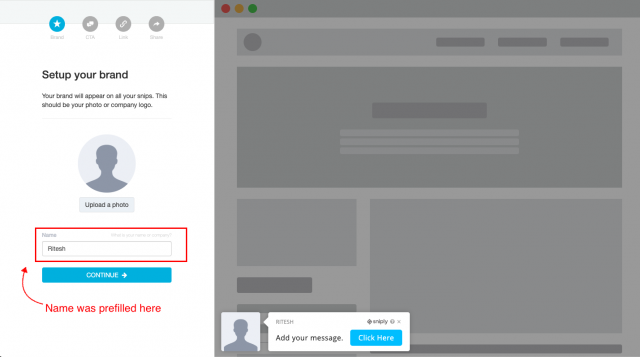
And If you continue ahead in their onboarding, you will find that they have filled the majority of boxes.
5. PERSONALIZATION
I don’t have to tell you how powerful personalization is.
Jeff Bezos once said in an interview with Washington Post in 1998,
“If we have 4.5 million customers, we shouldn’t have one store. We should have 4.5 million stores.”
And the rest is history.
Why does Personalization work?
Because it makes a more intimate connection by calling out names, forms a deeper relationship, and keeps us engaged.
And when you have all these, retaining user is no Hercules task.
Take an example:
You must have used Netflix.
During their onboarding process, they ask for the movies or tv series you like.
I don’t know what freaking algorithm they use, but they are generally spot on with their recommendation.
And If you are like me, who secretly keep his Netflix account hidden, so as to not mess up the recommendations;
Chances are you know the power of Personalization.
So, if possible, try calling out your user with their name in the Onboarding process.
Check how Sniply uses personalization in their User Onboarding.
6. HANDLING MICRO-AGGRESSION
People are impatient.
They want to do everything quickly.
You see, when your user tries to onboard for the 1st time, they have a very clear goal of what they want to achieve.
You just have to help them achieve their goal as fast as possible.
The longer you delay, the longer their frustration pile up.
And when their frustration reaches their head,
BOOM, You lose a potential customer.
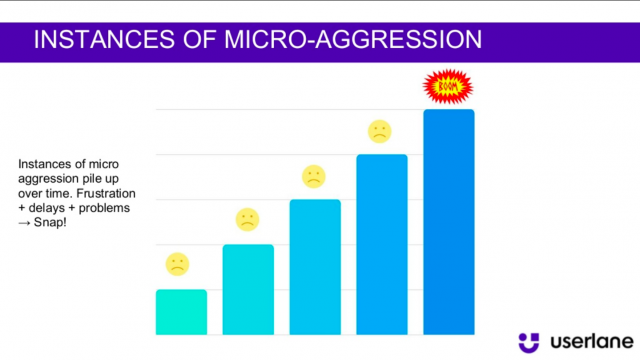
What can you do to avoid this?
Make your customer journey to onboarding easy so that they can quickly achieve their goal.
Also, give them a sense of freedom during the onboarding process.
That will make them feel that they are in control of the situation.
7. IKEA EFFECT
Do you know why people are a die-hard fan of IKEA?
A group of participants in their study was asked to do some task like folding origami, building Legos, and assembling IKEA boxes.
There was another group, which did no building and assembling.
Both of these groups were asked a question, i.e.
How much would they pay to take the items to their home?
They found that people who labored and took their time folding origami or assembling IKEA boxes were willing to pay significantly higher prices than those who didn’t.
Simply put, people assign a higher value( yeah, monetary value) to the products they spent their time creating or participating.
So make your user put some effort into the onboarding process.
Combine it with gamification and make it playful.
Take the example of Twitter.
When you onboard the Twitter for the 1st time,
Twitter asks you to choose your interest.
It’s not much of an effort, but it means that you are now more invested in your Twitter feed from the beginning.
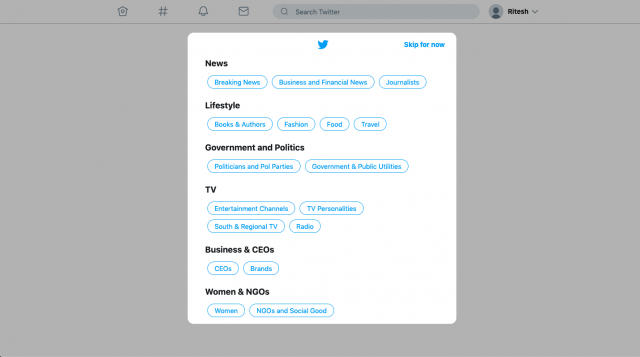
Take another example from Apple music.
When you sign up for the first time,
Apple music presents you different genres, albums, singers to choose from in a bubbly format.
It’s like a game where you tap the bubbles.
Based on genre and albums, Apple presents different sets of playlists to choose from.
You put an effort to make the playlist, and now you are invested in this.
Now here kicks the loss aversion, which basically means that you don’t want to give up what you spent your time creating.
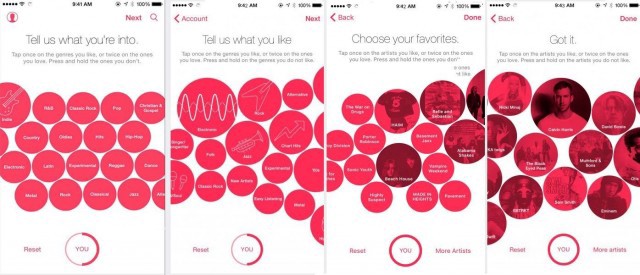
8. ENDOWMENT EFFECT
It’s an emotional bias where we irrationally overvalue something we own or have a feeling of ownership, regarding its actual value.
In 1991, Richard Thaler, Daniel Kahneman, and Jack Knetsch at Cornell University conducted an experiment.
They made 2 groups of students.
To the 1st group, they gave coffee mugs and told them they own it; And nothing at all to the 2nd group.
Then they asked the price they’d sell the mug for from the 1st group.
And the price they’d buy the mug for from the 2nd group.
You won’t believe the result.
The selling price was at least 2–3 times higher than the buying price.

In a nutshell, people put an unexpectedly high value to the product simply because they own it.
Why?
Because of the loss aversion.
The fear of losing the mug causes a difference in price.
So, how you can use this in SaaS Onboarding.
Well for starters, You can provide your customers with a free trial.
Free Trials give partial ownership to your customer, which many of them are unwilling to give away at the end of the trial period.
But a word of caution here; make sure that your trial is not unnecessarily long.
Long trials will make your customer think that they have plenty of times.
This often ends up with them, forgetting about the trial.
See how ProdPad took the Endowment effect to the next level.
They reduced their trial from 30 days to 7 days, but there is a catch here.
The more you use ProdPad during the trial, the longer your trial becomes.
Well, they ended up doubling their trial to conversion rate.
CONCLUSION
Many important factors come into play to make user onboarding one of the most essential parts of a customer journey.
Do you know the secret behind an awesome user onboarding?
It’s interaction with your customer.
Remember, your onboarding is the first line of engagement.
It’s the first thing your customer will see and feel about your SaaS.
All these psychological methods only help in maintaining their attention level so that they remain active throughout the process.
And that pretty much sums up my post.
What do you think about this?
Did I miss any point?

